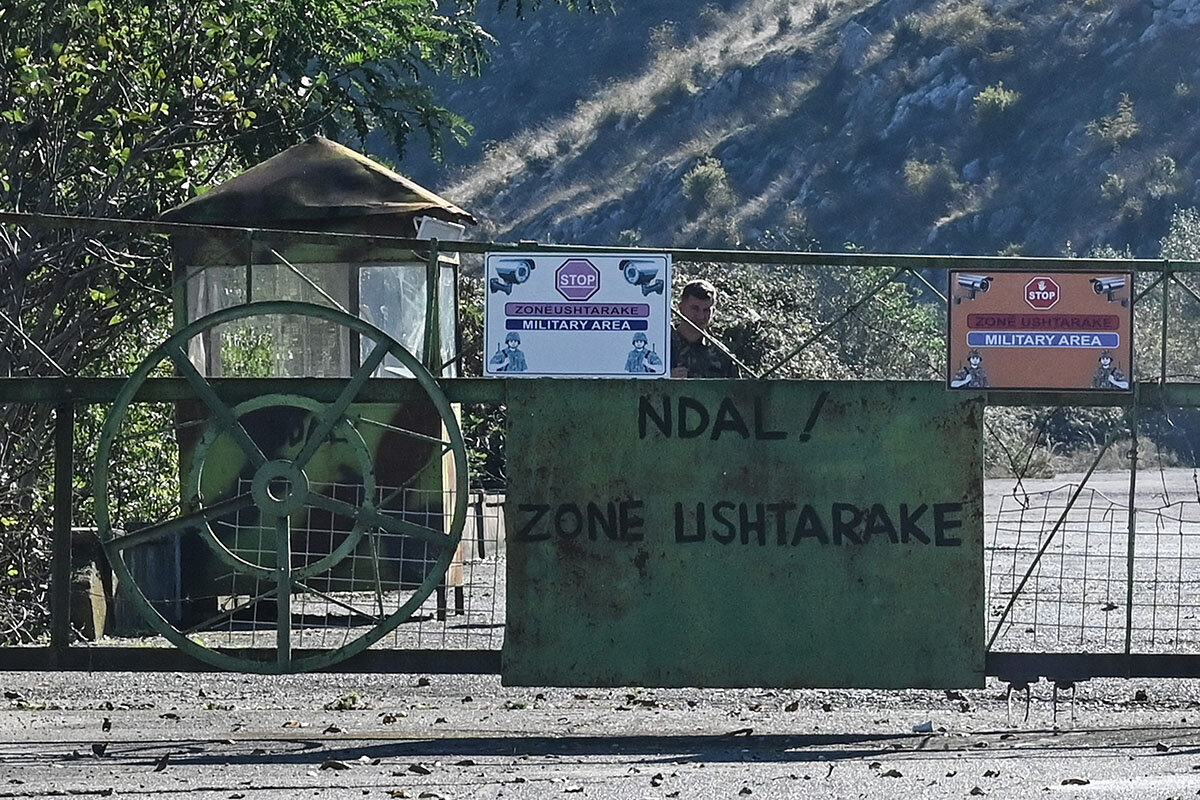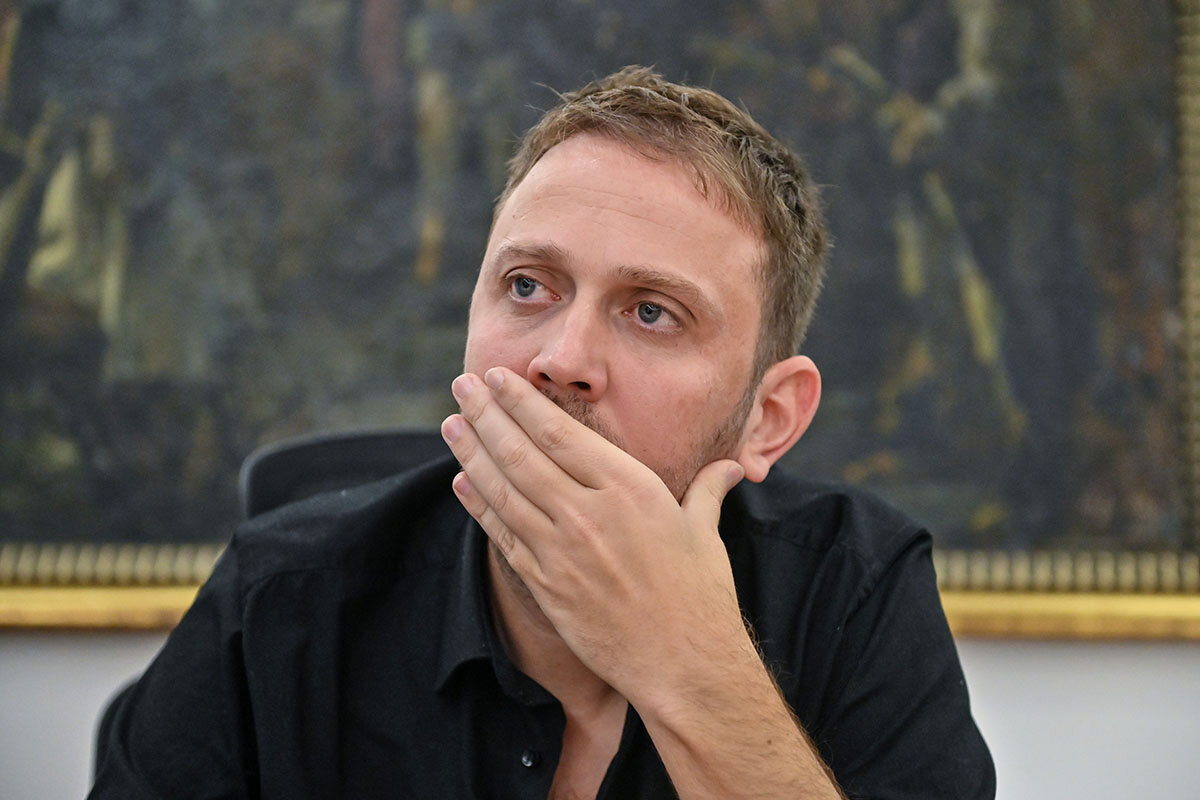To curb migrant numbers, Italy looks to Albania for help
Loading...
| Gjadër, Albania
Leaning over the front gate of his modest home in the village of Gjadër, Nikolle Voci is unfazed by the prospect that tens of thousands of migrants might soon arrive in this quiet, rural corner of northern Albania.
“For me, there’s nothing wrong. The migrants will not be staying here; they will just be passing through,” says Mr. Voci, who was himself once a migrant, having lived and worked in Australia for a few years. “Other countries helped Albanians in the past. Now it’s our turn to help.”
He is talking about a deal between the Italian and Albanian governments, outsourcing procedures to sort through some of the tens of thousands of migrants who try to reach Italy from the North African coast each year.
Why We Wrote This
A story focused onItaly has decided to assess some migrants’ applications for asylum at camps in Albania, to cut the numbers arriving on Italian shores. Is the plan more than cosmetic?
The controversial accord could have broad ramifications; the government in Rome suggests it might offer a model for other European Union countries as they try to clamp down on illegal migration.
Under the agreement, which was signed in November, Italian navy and coast guard vessels intercepting migrants in international waters will take them straight to Albania, where Italy will build two facilities to deal with them.
The first will be in the port of Shëngjin, a popular seaside resort with a long beach lined by a phalanx of tourist hotels, where the migrants will be assessed.
They will then be taken about 15 miles inland to a second, much larger facility, which is to be built on a disused Cold War military airfield just outside Gjadër, where they will await their decisions.
Those whose asylum bids are approved will be brought to Italy and allowed to resettle there or in other EU countries. Those whose applications are turned down will, the theory goes, be repatriated to their home countries.
No migrants will be settled in Albania.
As many as 3,000 migrants will be processed by Italian officials each month, according to the Italian government, which is promising that they will spend no more than 28 days in the new system before a decision is made on their future.
The ruling coalition in Rome, led by hard-right Prime Minister Giorgia Meloni, says that the facilities will be built and operational by early summer next year.
Repaying past hospitality?
Albanians know what it’s like to leave home and seek a better life abroad. Hundreds of thousands have emigrated since the end of communism in the 1990s and the chaos that ensued.
Many Albanians feel that the accord with Rome gives them a chance to show gratitude to Italy for accepting huge numbers of Albanian migrants over the last 30 years.
“It will be a way for Albania to repay Italy for welcoming and integrating our people,” says Ermal Pacaj, the center-left deputy mayor of the nearby city of Lezhë.
He remains wary, however, and says his administration knew nothing about the migrant accord until the day it was signed by Albanian Prime Minister Edi Rama and Ms. Meloni.
“Even though many Albanians go abroad to find work, we in Albania are not used to foreigners, so we’re not well prepared for this sort of thing,” he worries. “If it goes according to the plan with Italy, and there is good security, it will not have an impact. But if things go wrong, we’ll have problems.”
The bilateral accord has echoes of Britain’s troubled plans to send migrants to Rwanda in East Africa, an arrangement that has been dogged by legal challenges since it was first announced nearly three years ago.
Italy’s Albania plan has also proved controversial – both in Italy and across the Adriatic Sea. Some critics are calling it “a Balkan Guantanamo,” fraught with legal, ethical, and practical difficulties.
Others wonder what will be done with failed asylum-seekers whose home countries refuse to take them back. Few governments have repatriation deals with Italy; of the 150,000 migrants who have reached Italy this year, only around 4,000 have been repatriated.
“Do we really think we are going to be able to carry out the procedures of identification and asylum request for each migrant in 28 days when in Italy it takes months?” asked Emma Bonino, a former Italian foreign minister and EU commissioner, in the newspaper La Stampa.
“I think it will be very difficult,” she predicted. “Migrants who have the right to protection will be brought to Italy. And those who don’t have the right but who can’t be repatriated to their country of origin ... will be brought to Italy, too.”
If the migrants were locked up inside the centers, that would raise human rights concerns; if not, they would be tempted to head north toward Croatia, which is a member of the EU.
Sali Berisha, a former prime minister and president of Albania who now leads the center-right opposition, has warned that migrants “could become victims of trafficking.”
The Council of Europe, the continent’s leading human rights organization, is also unhappy about the accord, saying that it adds to “a worrying European trend towards the externalization of asylum responsibilities.”
Italy’s coalition government dismisses those fears, insisting the plan will become a model that other EU countries will want to adopt.
There is “great interest” from other countries in the bloc, insists Matteo Piantedosi, Italy’s interior minister.
The Italian government, which has so far failed to honor the pledges it made when it came to power last year to crack down on illegal migration, says the plan would cost around €200 million a year.
“It will be money well spent,” Foreign Minister Antonio Tajani told parliament last week.
Doubts on the ground
As politicians on both sides of the Adriatic hammer out the practical details of the accord, the pace of life in Gjadër remains bucolic, with farmers driving battered tractors down muddy lanes and a woman in a scarf herding a handful of cows with a stick.
While some locals are sympathetic to the plight of migrants, others are aghast at the prospect of the arrival of tens of thousands of mostly young men from Africa, the Middle East, and southern Asia.
“People here are not happy,” says Niko Rroku, raising the very same objections that Italians voiced when Albanians sought refuge in their country 30 years ago. “Some people here are scared for their lives. You don’t know who these migrants are.”
Down on the coast, the inhabitants of Shëngjin worry that frequent arrivals of migrants in the small harbor will damage tourism.
“For sure there will be an impact on tourism,” worries Edison Preka, a server in a beachside restaurant. “They should take the migrants to Tirana [the capital] instead. I hope people will protest and that it won’t happen.”








